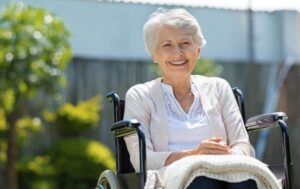
Caring for a Loved One with a Disability: A Guide for Families
Discover how to care for a loved one with a disability. Learn practical tips, emotional support, and self-care strategies for balanced family caregiving.

Staying active and fit as we age is crucial for maintaining overall health, vitality, and quality of life. For those in their 60s and beyond, regular exercise can help improve balance, strength, flexibility, and endurance, which are essential for everyday activities and long-term well-being. Here’s a guide to the top 10 exercises to keep you moving and thriving as you age.
Why It’s Great: Walking is a low-impact exercise that can be easily adapted to your fitness level. It promotes cardiovascular health, aids in weight management, and boosts mood.
How to Do It: Aim for at least 30 minutes a day, whether it’s a brisk walk around your neighborhood, a stroll in the park, or walking on a treadmill. Use supportive shoes and maintain good posture.
Why It’s Great: Chair exercises are perfect for those who have limited mobility or balance issues. They can be performed while seated, reducing the risk of falls.
How to Do It: Try seated marches, seated leg lifts, and seated arm raises. You can also use light hand weights to add resistance. Aim for 10-15 minutes, several times a week.
Why It’s Great: Strength training helps maintain muscle mass, bone density, and metabolism. It’s essential for preventing frailty and maintaining independence.
How to Do It: Use light weights, resistance bands, or body weight exercises like squats, lunges, and push-ups. Start with 1-2 sets of 10-12 reps and gradually increase as you get stronger. Aim for at least two sessions per week.
Why It’s Great: Tai Chi is a gentle, flowing martial art that enhances balance, flexibility, and mental relaxation. It’s often referred to as “meditation in motion.”
How to Do It: Join a local Tai Chi class or follow online videos that guide you through the slow, deliberate movements. Practice regularly to experience the benefits.
Why It’s Great: Swimming is a full-body workout that’s easy on the joints. It improves cardiovascular health, flexibility, and muscle strength without stressing your body.
How to Do It: Swim laps, engage in water aerobics, or simply enjoy a leisurely swim. Aim for 30 minutes of swimming 2-3 times a week.
Why It’s Great: Yoga enhances flexibility, balance, and mental clarity. It also helps with stress reduction and joint health.
How to Do It: Choose a beginner or gentle yoga class that focuses on flexibility and balance. Poses like Tree Pose, Warrior I and II, and Cat-Cow can be particularly beneficial. Practice 2-3 times a week.
Why It’s Great: Cycling provides a cardiovascular workout while being easy on the joints. It also strengthens leg muscles and improves endurance.
How to Do It: Use a stationary bike or a regular bicycle, depending on your comfort level and safety. Aim for 20-30 minutes, 3-4 times a week. Make sure your bike is properly adjusted to prevent strain.
Why It’s Great: Regular stretching improves flexibility, reduces stiffness, and helps prevent injuries. It’s an essential part of any exercise routine.
How to Do It: Incorporate stretching exercises for major muscle groups, including hamstrings, quadriceps, shoulders, and back. Hold each stretch for 20-30 seconds and repeat 2-3 times. Stretch after your workout or as a standalone activity.
Why It’s Great: Dancing is a fun way to improve cardiovascular health, coordination, and balance. It also has mental and emotional benefits.
How to Do It: Join a dance class, follow online dance routines, or simply dance to your favorite music at home. Aim for at least 30 minutes, 2-3 times a week.
Why It’s Great: Balance exercises help prevent falls and improve stability. They are particularly important as we age, when balance tends to decline.
How to Do It: Try simple balance exercises like standing on one leg, heel-to-toe walking, and tai chi. Practice these exercises daily or several times a week to enhance your balance and coordination.
Staying active in your 60s and beyond can lead to a healthier, more fulfilling life. By incorporating these exercises into your routine, you’ll enhance your physical fitness, mental well-being, and overall quality of life. Remember, the key is consistency and finding activities that you enjoy and can sustain over the long term. So, lace up your sneakers, grab your yoga mat, or hop on your bike, and start moving toward a healthier you today!

Discover how to care for a loved one with a disability. Learn practical tips, emotional support, and self-care strategies for balanced family caregiving.

Discover science-backed longevity diet tips, debunk common myths, and learn what truly supports a longer, healthier life through balanced nutrition.

Maintaining a balanced diet is essential for overall health, but for individuals with mobility challenges,

Technology has become an essential part of daily life, but for many seniors, adapting to digital tools can feel overwhelming.
Copyright © 2018 - 2023, TAUS Care. All Rights Reserved. Designed by RepuNEXT.